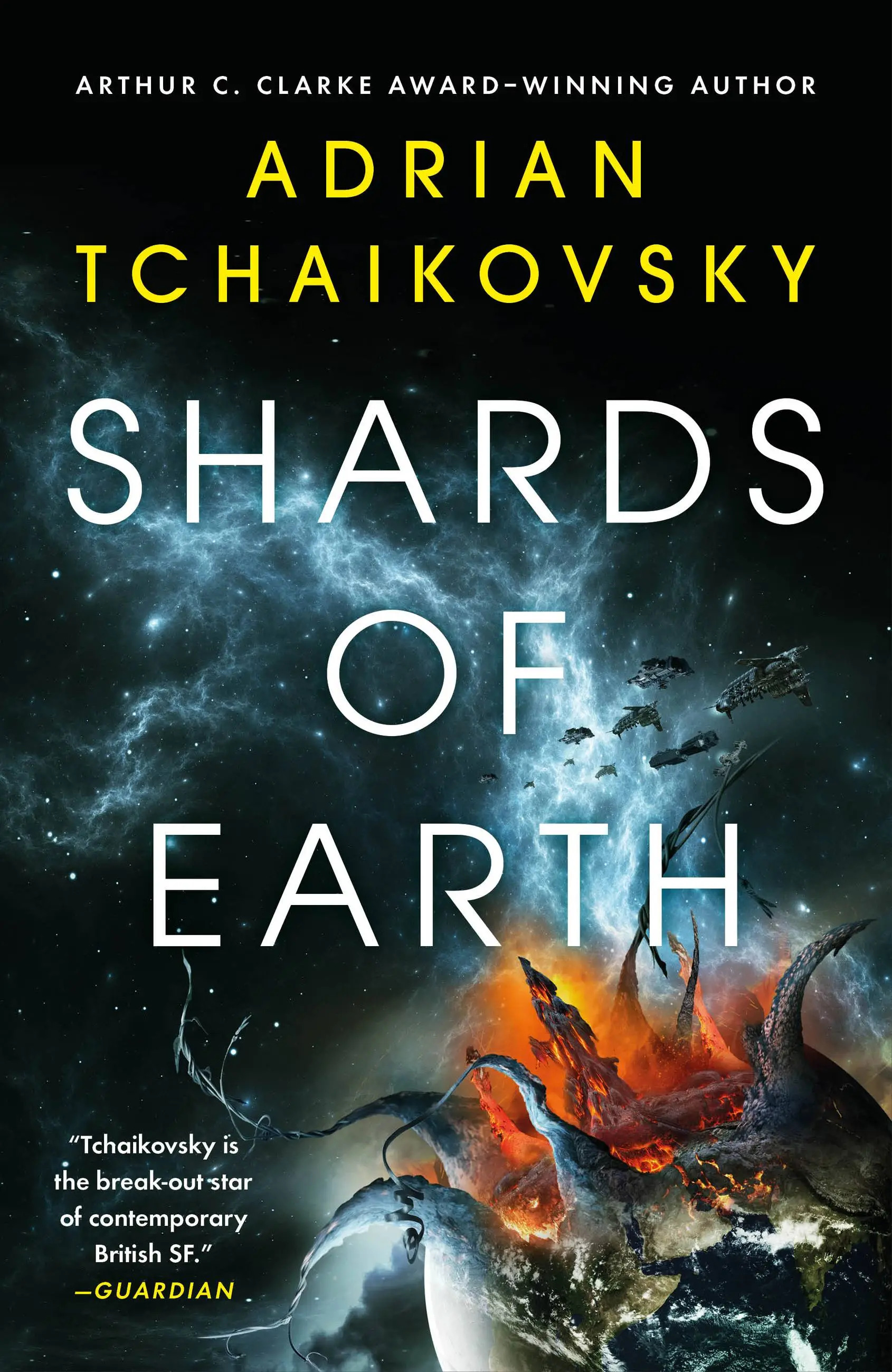Shards of Earth

Review
Shards of Earth, by , is the first book in the The Final Architecture series. It follows Idris, Solace, and the crew of the Vulture God as the Architects return and restart their genocidal campaign against humanity.
The plot centers on the ragtag crew of the Vulture God as they get pulled into a galaxy-spanning conspiracy. The Architects—moon-sized beings that reshape worlds into fractals—have returned, and only psychic humans called Intermediaries (Ints) can stop them. The Vulture just happens to have Idris, one of the last surviving Ints from the first war, so everyone is after them. The ship and crew remind me a lot of Han and the crew of the Millennium Falcon or Mal and the crew of the Firefly: simple people dragged into something much larger.
The best part of Shards of Earth is the story—it kept me turning pages to see what happened next, the same way ’s writing did in Pandora’s Star. The universe is interesting, but feels derivative of earlier works. And despite the scale of destruction—whole planets annihilated by the Architects—the emotional impact is missing. Billions die, but since no one we know is threatened, it doesn’t have any weight. That shows up elsewhere too: although the story has galactic scale, the conflict and universe feel small. The crew hops from place to place, each stop just another short-lived adventure (with twist after twist), before flying off again. In fact, the twists became so routine they were predictable: the crew’s in inescapable trouble? They’re about to get bailed out—sometimes multiple times in a row!—by one of their pursuers.
The worst part is the writing. It’s workmanlike, and similar to but not nearly as bad as ’s House of Suns. The author just doesn’t trust the reader to pick up on things. Instead of subtle world-building, he lore-dumps. repeats information so much I started wondering if I’d accidentally flipped back a few pages. One especially bad example: sets up a motif around spacer funerals, uses it again for Idris before he heads out on a suicide mission, and then immediately has one of the characters explain the motif.
Influences
Shards of Earth draws heavily from earlier sci-fi:
Unspace is an alternate dimension for faster-than-light travel that is essentially the Warp from Warhammer 40,000: a dangerous realm that drives people insane, is home to a dark entity, and requires psychics to navigate. The Ints required to do so are modeled on the Guild Navigators from ’s Dune. The influence is even clearer with the Hegemony’s whale-like Ogdru navigators, matching the “fish-like” Guild Navigators as described in Dune Messiah.
The space physics feels familiar as well, with the way ships gain traction against the boundary with Unspace similar to how Culture ships maneuver using the Grid. And the idea that intelligence warps Unspace, much like mass warps spacetime, suggests the Architects are destroying life to stop its mental “pollution”; similar to how human thought creates the all-consuming Pale in Disco Elysium.
The genetically engineered warrior women of the Parthenon are a blend of Dune’s Fish Speakers, the Adepta Sororitas from 40k, and the tank-born Clans from BattleTech. Solace’s teardrop face tattoo mirrors the Sororitas’s fleur-de-lis.
The Architects are a mash-up of the whale probe from Star Trek IV: The Voyage Home and the Reapers from Mass Effect. makes the homage clear with a line about the Architects’s signal being “…solitary and singular as a whale song…”
The Essiel Hegemony is a lot like the Covenant from Halo—both are multi-species empires, more advanced than humanity, with each species filling a set role. The huge alien cast also gave me strong Mass Effect vibes.
The book also borrows from early 20th-century history. The dueling culture and honorable scars come straight from academic fencing in Germany and Austria. The Boyar from Magdan are lifted from Eastern European nobility. The Nativists and their extremist faction, The Betrayed, are the Nazis, complete with the “stab-in-the-back” myth. The apocalyptic war, followed by shaky peace and then another war, is basically WWI and WWII.
And possibly a hint for how the series will turn out: names one of the Parthenon ships the Thunderchild, a direct reference to the battleship from ’s The War of the Worlds, another story where a seemingly invincible alien force is ultimately defeated by something small and overlooked.
Book Club
I read this for my book club, and I liked it enough that I’m going to read Eyes of the Void and Lords of Uncreation. But I’m taking a break first to read Bolo: Annals of the Dinochrome Brigade and Rogue Bolo, and maybe a few more from the The Murderbot Diaries series.